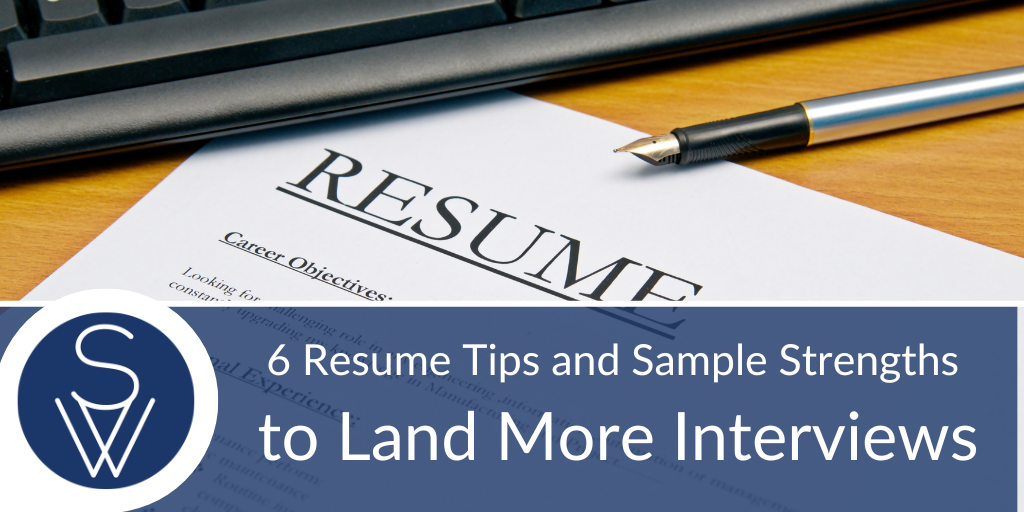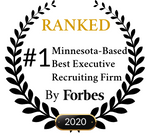
A successful job search is all about nailing the interview. But you’ll never have the opportunity to do that if your resume can’t pass the automated screeners – and dazzle the human ones.
Yet, as an executive recruiter, I can tell you that far too often, great candidates fail to create sufficiently great resumes. (If you’re under the impression that you don’t need to have a 2019-worthy resume because your track record will somehow magically speak for itself, I’m sorry. It probably won't.) If you’re sincere about wanting a better job, you need to market yourself, using the tools and tactics that showcase your qualifications and get you into that interview.
The key to creating a powerful resume lies with your ability to do three things very well:
- identify and inventory your strengths,
- package and promote those strengths through the smart use of keywords, and
- create a consistent personal brand across all communication channels
Here's how, in 6 steps:
1. Know Your Strengths
Before drafting your resume, take the time to inventory 5-15 of your greatest strengths. If you have completed credible strength assessments, such as Gallup CliftonStrengths, include those findings here.
Keep in mind, for each strength you claim, you’ll need examples or other evidence to bolster that claim. That might include work experience, awards, endorsements, or other proof can you tie to each strength. For example, jotting down that you’re a “strong manager” won’t cut it. Strong how? What manager strengths do you use? To what results? Have you repeatedly been asked to take over underperforming teams, then led them to sustained superior performance? Say that – and quantify the improvements. Pull all of the detailed facts of your greatest accomplishments together to support every job-relevant strength you have. You’ll need those details for your resume (and everything else, including your LinkedIn profile, cover letter and the interview itself).
2. Keywords: Tailoring Your Strengths to Match the Job Posting
Your job search is a major marketing initiative and your resume is a mission-critical copywriting task. But it's really not as daunting as it sounds. For the most part, it all comes down to keywords and how well you use them. Start by carefully studying the postings for the jobs you want. Copy the key descriptive words you find in the “responsibilities,” “qualifications,” and “requirements” sections. These are the keywords you will weave throughout your resume. The more closely the words in your resume match those in job posting, the better your chances of passing the initial screens. Take the exercise a step further by incorporating keywords from the employer’s Home page, About page, and Vision & Values. For example, if a brand is all about innovation, be sure you include innovator in your strengths.
A word of caution: don’t just stuff your resume full of keywords without supporting each with proof of your strengths. AI-powered screening software almost always tosses those resumes out of consideration. Even if it doesn’t, you’ll surely be rejected by the second wave screener: the recruiter or hiring manager.
3. Write Your Summary, Using Your Strength Keywords
At the top of your resume, state your target position, followed by a brief, compelling Summary section. Because your Summary can be comprised of phrases, not necessarily sentences, you should be able to keep it to 7-10 words. For example, you might say “Proven turnaround expert who rebuilds superior sales teams,” or “Sales leader whose teams consistently outperform goals.”
But remember, you want to tailor your Summary to each job for which you're applying. So, for example, if one job posting is for a “sales manager” requiring “a minimum of 10 years sales management experience,” “strong people management skills” and a candidate who is an "energetic, motivating leader,” you could edit your summary to include phrases like, “Proven sales manager with 15 years experience in building high performing teams,” or “15 years proven sales management experience,” and/or “high energy, people oriented sales manager who leads by inspiring others to excel.”
4. Create Your “Proven Strengths” Section
Before getting into a detailed chronology of your previous work experience, create your Proven Strengths section. Here, you’ll list your strengths, prioritized by the keywords in each job posting. This is where you get detailed. For example, your turnaround skills could be quantified with the actual improvements you drove during your tenure in each position (e.g. revenue, profits, customer satisfaction, etc.). Your motivational skills could be illustrated by using complimentary quotes from previous employees, managers, clients, or even verbiage from performance appraisals. Use this section to tell the story of how you apply your strengths in ways that add value to the organization.
Reminder: never stray into the irrelevant. Stick to the priorities and keywords of the job you want. Unrelated hobbies or accomplishments, while impressive, are less likely to play a role in snagging you the interview.
5. Weave Keywords Throughout the Rest of Your Resume
As long as your keywords demonstrate how your qualifications fit the job requirements, use as many keywords as possible. The more liberally they are sprinkled throughout the resume, the better your chances that Applicant Tracking Systems (ATS) or other screening programs will recognize your resume as a good fit. Use the keywords when describing specific skills, experiences, soft skills, core competencies, and relevant programs, applications and tools in which you are proficient.
Before your final edit, ask a trusted friend to read the job description and your resume so they can give you a reality check. Remember, every keyword must be used within the context of what the employer needs and the job demands. If your resume reads like you’re stuck on a word loop, tone it down. If it’s not enough, pump it up.
6. Sync… or Sink
Before inviting you for an interview, most employers and recruiters will search for you on professional networking sites like LinkedIn to gather additional professional information on you. They’ll probably also see what they pick up on social media sites. These days, there is a growing expectation that job seekers who have been in the workforce will also have their own online portfolio (e.g. YourfirstnameYourlastname.com).
But it’s not enough to have your name and work experience plastered all over the webiverse. You need to be sure that your personal brand, key messages, and proven strengths, are marketed consistently across all channels. Inconsistencies in your messaging will work against you, big time, in your job search. Whether you like it or not, everything about you that can be found online is now part of your brand message and marketing materials. While your tone can vary, depending on the nature of the site itself, be sure nothing undermines your brand.
On LinkedIn, that may sound difficult when you’re tailoring ten resumes for ten different employers. But the key is to pull all of your proven strengths (from all of your resumes) onto one statement. Remove any redundancies, make sure it’s clear and compelling. Then copy it all onto onto your LinkedIn Summary. Do the same on the homepage of your portfolio site. Remember to use the power verbs, nouns and adjectives that are most commonly found on job postings and employer websites – and add language that’s all your own to tie it all together. Here is some sample language that many recruiters and managers find very compelling:
Skill words: Turning around, rebuilding teams, increases profitability, reduces legal exposure, process improvement, project management
Technologies and Tools words: Oracle, JavaScript, Google Analytics, SalesForce, Webex, Boolean searches
Methodologies words: Lean Six Sigma, Agile development environment
Personal Attributes Words: Approachable, trusted influencer, high expectations of self and others, inspiring leader, thrive in a collaborative environment
Why all this focus on strengths, vs skills?
Because you are more than a cluster of skills. You are a whole person. The employer is looking for the candidate who knows their own strengths, understands what the job demands, and is ready to bring value to the organization. They want to know you. It’s up to you to show them how your unique set of strengths makes you uniquely qualified.






